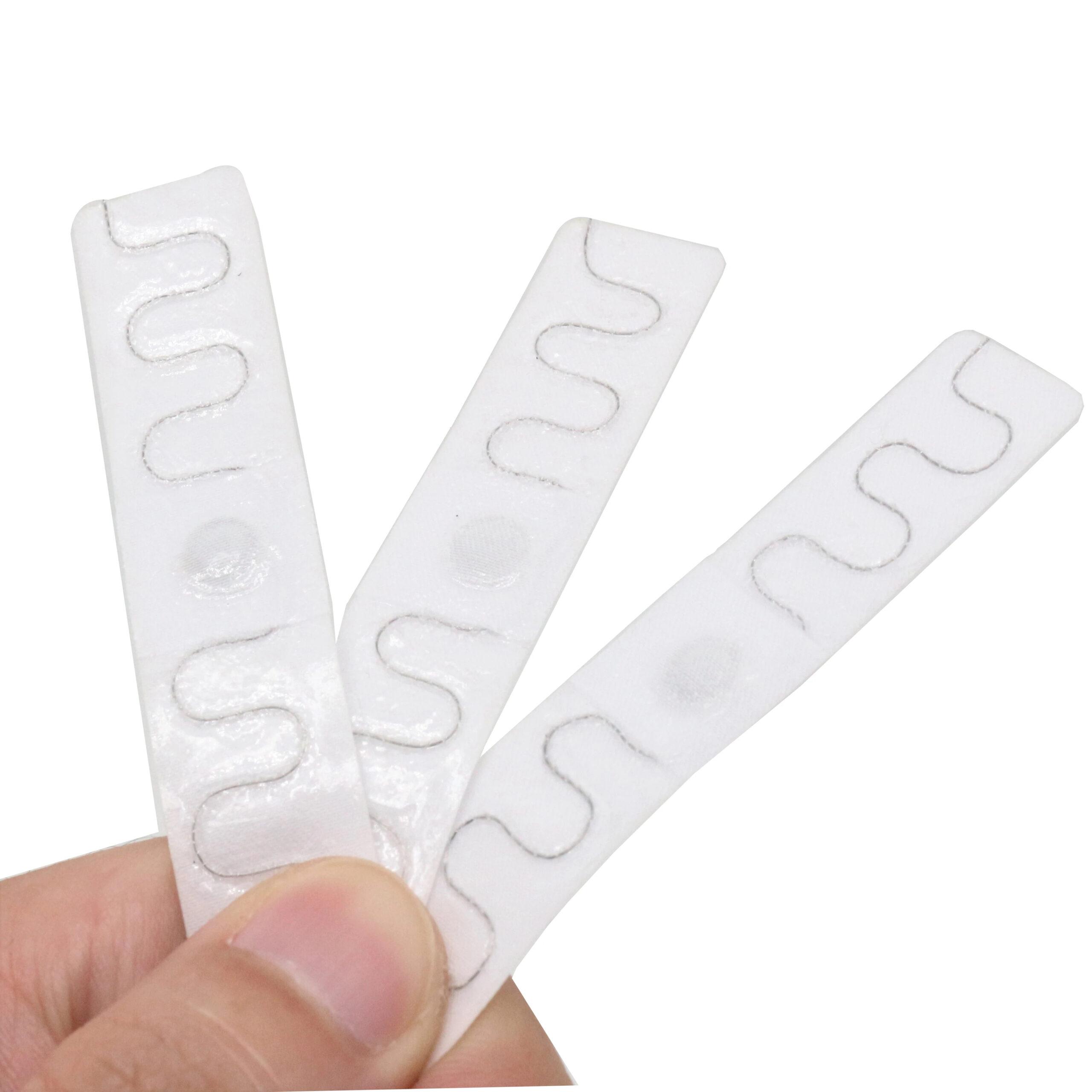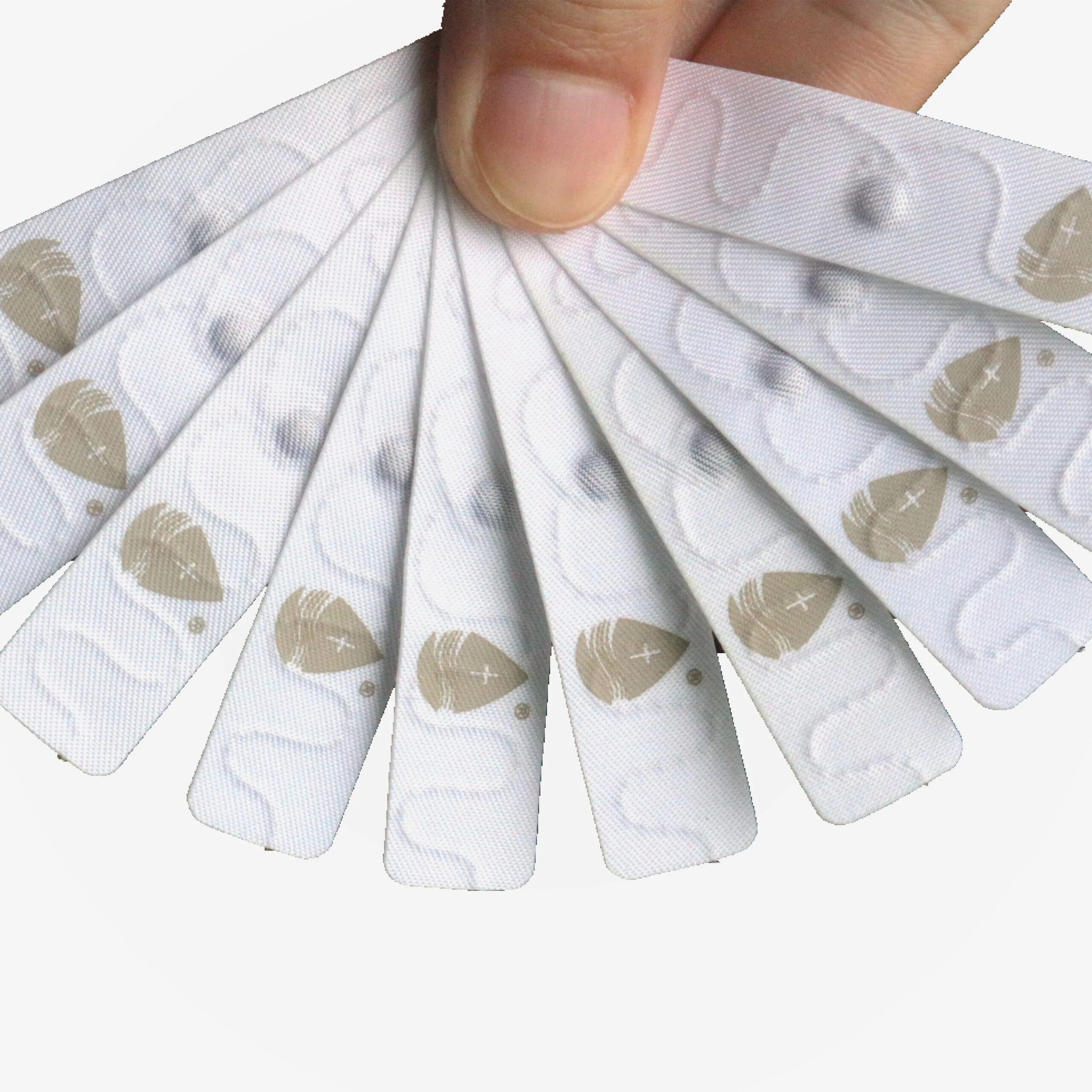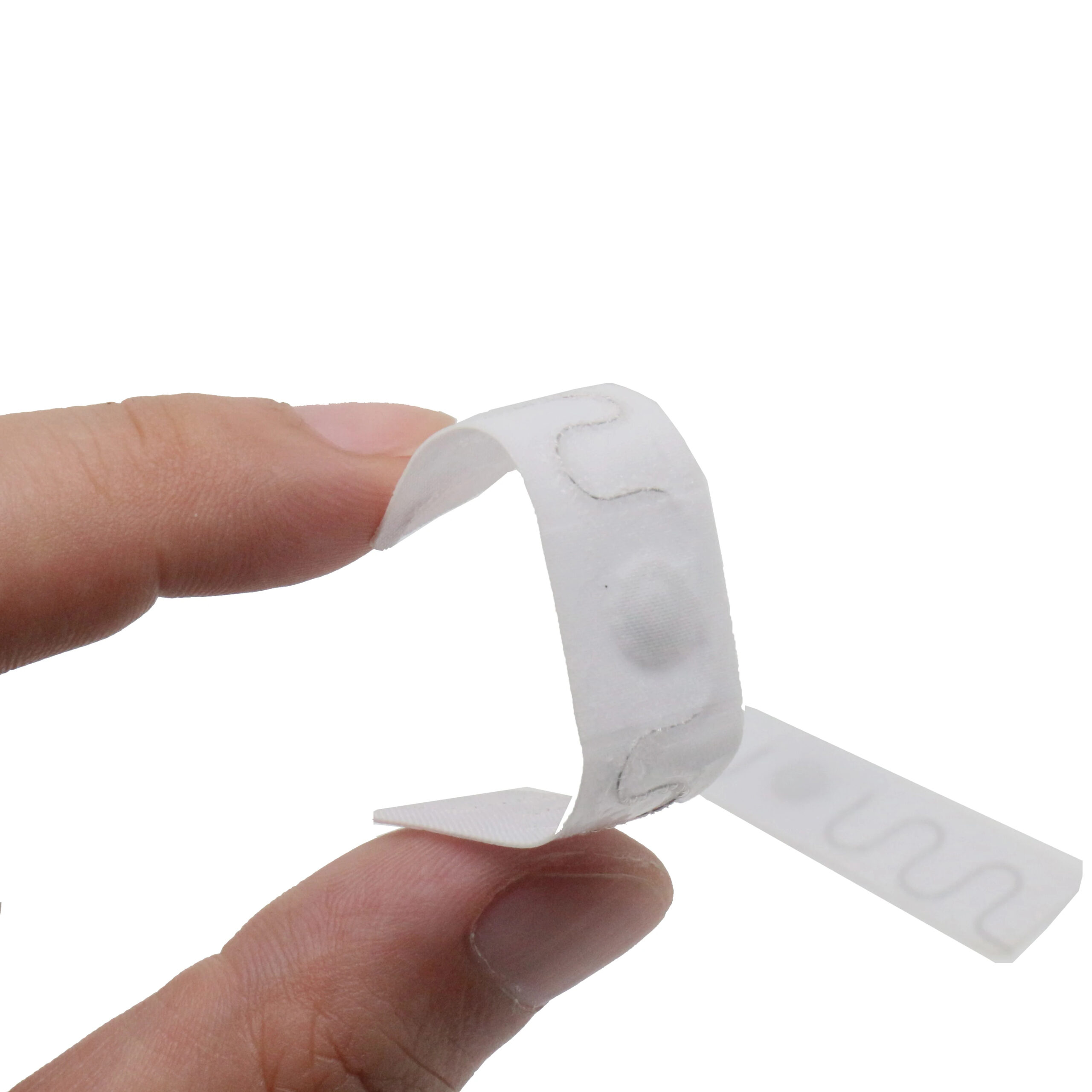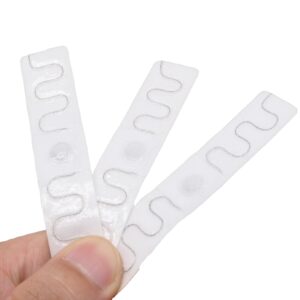Textile UHF RFID Linen Tags
Textile UHF RFID Linen Tags can be also called RAIN RFID Textile Laundry Tags ,which have been meticulously designed to consistently perform under the tough conditions of laundry processing, such as sterilization, heat exposure, cleaning, drying, and ironing. These tags are not only capable of withstanding hundreds of laundering cycles, but they also maintain excellent and consistent RFID performance even after countless rounds of washing.
| Item Name: | Textile UHF RFID Linen Tags |
| RFID Standard: | ISO/IEC 18000-6 TypeC (EPC Gen2) |
| Size&Weight: | 70×15 mm, 0.6g |
| Chip Type: | Impinj Monza 4QT,NXP U CODE 9 |
| EPC Memory: | 128bits |
| User Memory: | 512bits |
| Read Range(2W ERP FCC): | 8m |
| Read Range(2W ERP ETSI): | 8m |
| Tagging: | Sewing, Hot stamping adhesive |
| Estimated Lifetime: | 200 washing cycles or 3 years, whichever comes first |
| Washing Method: | Laundry, Dry cleaning |
| Water Extraction pressure: | 60 bar |
| Water Resistance: | Water resistant |
| Chemical Resistance: | Detergent, Softener, Bleach (Oxygen/ Chlorine), Alkali |
| Pre-drying in Tumbler: | 125 ºC for 15-20minute |
| Sterilization Temperature: | 135°C for 15-20minutes |
| Washing Temperature: | 90°C ,Up to 15min. |
| Humidity/ Temperature-Operating: | -20 to 110°C, 8 to 95%RH |
| Humidity/ Temperature-Storage: | -40 to 110°C, 8 to 95%RH |
Top Features of the UHF RFID Linen Tags
- Durability: The tags are crafted to withstand industrial laundry processes. With the capacity to endure extreme temperatures, detergents, and drying conditions, they are designed for heavy-duty use.
- Washable Nature: These washable RFID tags maintain their integrity even after repeated washes, making them ideal for any textile management system. They can handle up to 200 wash cycles without losing functionality.
- High-Performance RFID: Utilizing cutting-edge UHF technology, these tags provide a robust reading distance, facilitating efficient tracking and management of textiles.
Key Benefits of RFID Linen Tags
One of the standout benefits of textile RFID linen tags is their ability to improve the accuracy of inventory management. By automating the tracking process, businesses can significantly reduce the risk of missing or misplaced items. Moreover, these tags enhance asset visibility, allowing laundry facilities to maintain transparency in their operations.
Another critical benefit is the cost-saving potential. With automated tracking, labor costs associated with manual inventory checks decrease significantly. The long-term reliability of these tags also adds value, as they can be reused across multiple laundry cycles, ensuring businesses maximize their investment.
Durability and Washability of RFID Tags
When it comes to durability, RFID tags boast a robust design that can withstand the challenges posed by commercial laundering. With the ability to endure high temperatures and aggressive chemical exposures, such as bleach and fabric softeners, they are optimized for both washing and drying processes.
The washable nature of these tags means they can be integrated seamlessly into your existing laundry items. This adaptability allows for easy attachment to garments and linens through sewing or adhesive application, thereby avoiding any disruptions to your textile items’ functionality or appearance.
Installation
Stitch Tagging: To be stitched into the hem of a textile. Stitch the laundry tag away from the folding lines.
Heat Sealing: To be heat-sealed directly on the textile at +200°C (392°F), for 12~14s.
In Pouch: To be stitched like a standard care label. Stitch the laundry tag away from the folding lines.
Uses of the Fabric Textile Washable UHF RFID Laundry Tag
- Industrial Laundry: Streamlines the cleaning processes and distribution logistics of uniform laundry.
- Hospitality Sector: Enhances the management of laundry systems for hotel furnishings and towels.
- Healthcare Industry: Aids in the organization and maintenance of hospital and healthcare attire.
Environmental Considerations
Using RFID linen tags also contributes to environmental sustainability. The ability to reuse and track linens helps reduce waste, ensuring that items are used efficiently over their lifecycle. Moreover, the durability of these tags means fewer replacements, minimizing the environmental footprint associated with constant production and disposal.
FAQs about RFID Linen Tags
Q: How many wash cycles can the tags withstand?
A: Our RFID linen tags are designed to maintain functionality even after 200 wash cycles, making them highly durable for long-term usage.
Q: Can the tags be sewn into any fabric?
A: Yes, the tags can be seamlessly integrated with various textile materials, ensuring they remain attached through multiple laundry processes.
Q: Is RFID technology reliable for tracking linens?
A: Absolutely! RFID tags offer unparalleled tracking accuracy, minimizing losses and aiding in efficient inventory management.
Conclusion
In conclusion, Textile UHF RFID Linen Tags represent the future of laundry management. By enhancing tracking efficiency, durability, and cost-effectiveness, they serve as vital tools for any business reliant on linens and garments. With advanced technology and robust performance, these RFID tags are designed to meet the demands of modern laundry operations.








